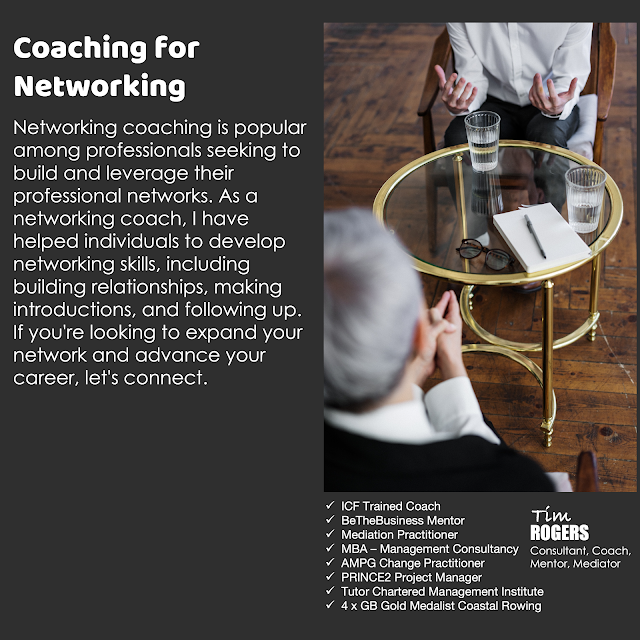
I am doing some work with government and have been thinking
about the boundaries between Policy and Strategy, Strategy and Delivery.
The notes below are a generalised rather than specific observations,
but nonetheless interesting because I am also a participant in the
Jersey Policy Forum and the Jersey Policy Centre, and with that context
is it interesting to think about what we expect from Policy and
Strategy, Plans and Projects – the advice versus action, the discussion
versus the doing.
AMBITIONS AND ACTIONS, DECISIONS AND DELIVERY
Nobody likes a strategy that is simply a list of ambitions with
no actions, bold promises never turned into plans, let alone delivered.
Yet we do expect to separate strategy from implementation and see a
policy document and a change programme as two distinct things, all too
often disjointed.
DO THE RIGHT THINGS, RIGHT
People also instinctively are ready to offer advice and make
to-do lists without really being clear on measures, output and outcomes.
Sometimes there is a lot of action without clarity of purpose or
mechanism to measure the efficiency and effectiveness of the action in
pursuit of an agreed objective. Doing “good stuff” is not strategic so I
recall we must do the right things (strategy) and we must do those
things right (implementation)
STEP 1 POLICY POSITION
Policy – What's our position on these strategic / industry issues?
A policy position paper is a document that presents an issue,
articulates a stance or position, and proposes actions or solutions with
respect to that issue. The policy position paper you described would
typically be organized as follows:
1. Introduction: This would include a brief overview of
the topic, why it's important, and an introduction to the primary
challenges it presents.
2. Main Challenges: This section would detail the key
challenges or problems associated with the issue. It would discuss who
or what is affected by these challenges, how they are affected, and why
these challenges exist.
3. Government's View and Priority: Here, the paper would
present the government's perspective on the issue, including how it
perceives the challenges and why it considers them important. This
section would also articulate the government's priorities in addressing
the issue, including which aspects it considers most critical to address
first or most strongly.
4. Government's Intended Actions: This section would
outline the specific actions the government intends to take to address
the challenges. This could include proposed legislation, regulatory
changes, funding programs, or other actions. Each proposed action would
be discussed in terms of how it would address the challenges and achieve
the government's priorities.
5. How the Government Will Implement its Actions: This
section would discuss the specifics of how the government plans to
implement its proposed actions. This could include timelines,
responsible agencies or departments, necessary collaborations or
partnerships, and resources required.
6. Conclusion: The paper would wrap up with a summary of
the main points and a reaffirmation of the government's commitment to
addressing the challenges.
A policy position paper of this type serves to inform the
public, other branches of government, and stakeholders about the
government's views, priorities, and plans regarding a particular issue.
It also provides a platform for discussion and feedback, helps to
coordinate actions across different parts of the government, and serves
as a record of the government's commitments.
I think one of the challenges for government is coherent policy rather than ministerial silos. In complex adaptive systems where policy, strategy, and implementation (sometimes legislation) have often unintended consequences it can be very difficult to have coherent policy.
STEP 2 STRATEGY
Strategy – What needs doing, measuring & managing?
A strategy is a high-level plan designed to achieve one or more
goals under conditions of uncertainty. It serves as a roadmap for an
organization, outlining how it will achieve its objectives.
1. Executive Summary: A concise overview of the
strategy, providing a snapshot of the main objectives, methods, and
expected outcomes in addressing bed-nights.
2. Introduction:: This section provides background on the topic area and its importance to the economy.
3. Current Situation Analysis: A comprehensive review of
the current state of the bed-nights industry, highlighting strengths,
weaknesses, opportunities, and threats (SWOT) as they relate to
government objectives.
4. Vision and Strategic Objectives: This portion
outlines the government's vision for [add text] and the key objectives
to be achieved, such as improving quality standards, increasing industry
income, or promoting sustainable practices.
5. Strategic Initiatives: A detailed description of the
initiatives that will be undertaken to achieve the strategic objectives,
such as regulatory changes, funding programs, or promotional campaigns.
6. Implementation Plan: This section presents a roadmap
for implementing the strategy, including timelines, responsibilities,
required resources, and key performance indicators.
7. Monitoring and Evaluation: A discussion of how the
strategy's effectiveness will be monitored and evaluated, including the
metrics to be used and the schedule for regular reviews and adjustments.
8. Stakeholder Engagement: An outline of how the
government plans to engage with stakeholders, including industry
players, local communities, and other relevant parties, to successfully
implement the strategy.
9. Risk Management: An analysis of potential risks or challenges to the strategy and how they will be managed or mitigated.
10. Conclusion and Next Steps: A final summary of the
strategy, reiterating its importance to the bed-nights industry, and
outlining the immediate next steps for its implementation.
I think one of the challenges for government is strategy tends to be a list of noble aims or possibly targets without clarity on how they might be delivered. It is not always obvious how all these elements work together, and indeed if they work at all. Some of the Scorecards have not been updated since 2019 - what does that tell us about delivery?
Jersey Performance Framework
https://www.gov.je/government/planningperformance/governmentperformance/pages/governmentperformancemeasures.aspx
Jersey's natural resources are managed and used responsibly (Scorecard)
https://embed.clearimpact.com/Scorecard/Embed/64777
Departmental Operational Business Plans 2020
https://www.gov.je/Government/PlanningPerformance/DepartmentalOperationalBusinessPlans/Pages/DepartmentalOperationalBusinessPlans.aspx
Government departments' Performance Measures 2022
https://www.gov.je/government/planningperformance/governmentperformance/performancemeasures2022/pages/index.aspx
Delivery Plans 2023
https://www.gov.je/Government/Pages/StatesReports.aspx?ReportID=5653
STEP 3 IMPLEMENTATION PLANNING
How will we deliver the strategy (objectives into tasks for delivery)
Before we can move into implementation we may need some form of
feasibility or project initiation, perhaps an Expert Task Force with a
Terms of Reference to review, report and make recommendations for
implementation.
1. Background and Purpose: The Task Force is established
to review the current state of [add text here] The Task Force will
focus on aspects such as [add text here].
2. Scope of Work: The Task Force will conduct a
comprehensive review of [add text here]. The Task Force will assess the
current state, identify challenges, opportunities and make
recommendations for enhancements.
3. Membership: The Task Force will be composed of
representatives from industry, subject matter experts, representatives
from related sectors such as [add text here] and relevant government
officials.
4. Roles and Responsibilities: Members will contribute
their expertise to review the industry, provide insights, and develop
practical and actionable recommendations. The Task Force will elect a
Chair to oversee meetings and a Secretary to manage documentation and
communication.
5. Methodology: The Task Force will conduct its review
through a combination of data analysis, consultations with stakeholders,
review of relevant literature and case studies, and benchmarking with
best practices globally.
6. Reporting: The Task Force will prepare a
comprehensive report presenting its findings and recommendations. The
report will include an executive summary, detailed findings, and
specific, actionable recommendations, along with a proposed
implementation plan.
7. Timeline: The Task Force will commence its review on [Start Date] and submit its final report by [End Date].
8. Meetings: The Task Force will meet bi-weekly (or as decided) to review progress, discuss findings, and formulate recommendations.
9. Resources: The Task Force will have access to
necessary resources including data, industry reports, administrative
support, and funding for research activities.
10. Evaluation: The effectiveness and impact of the Task
Force’s recommendations will be evaluated one year after the
implementation of the recommendations.
11. Confidentiality and Conflict of Interest: Members of
the Task Force must maintain confidentiality of the discussions and
findings until the report is officially published. Any potential
conflicts of interest must be declared and managed appropriately.
At this stage I am becoming wary that there is lots of debate
and a number of documents but not yet any delivery. I console myself
that great buildings need architectural drawings, mechanical and
engineering plans and similar to be able to ensure delivery to
specification, on-time, on-budget with low-risk and clear communication
and consensus. But still I am wary.
The volume and nature of
government advisors can be informative, and who they pick and what they
do can be telling as regards policy, strategy, implementation. Their
expertise and whether they are used to set course, defend position or
evaluate and validate would inform my answer.
We may see soon, hopefully aided by objective goals, targets, measures, and updates.
STEP 4 IMPLEMENTATION EXECUTION
Only now do we get to the familiar SMART Goals or Project
Delivery to be allocated to individuals or organisations as part of the
role, contract or service agreement. Only now do we see actions with
outcomes that have an impact on the delivery dashboard of agreed
measures and accountability.
It is what project managers would call a waterfall (sequential)
rather than agile approach, and I am really thinking hard about how we
can make the Policy and Strategy, Plans and Projects much faster,
iterative and agile.
The problem is strategy without action is pointless, action without strategy is ineffective and inefficient (and potentially counterproductive)
Targets and data help focus people, process, budgets, and partnerships are needed so that goals are collaborative rather than competing
So whilst there is a need for short-term "put the fire out" actions and bottom-up feedback for immediate action it is nonetheless necessary to be clear on strategy and orchestrate resources when it comes to long-term strategy and change, and this takes time and consideration.





















